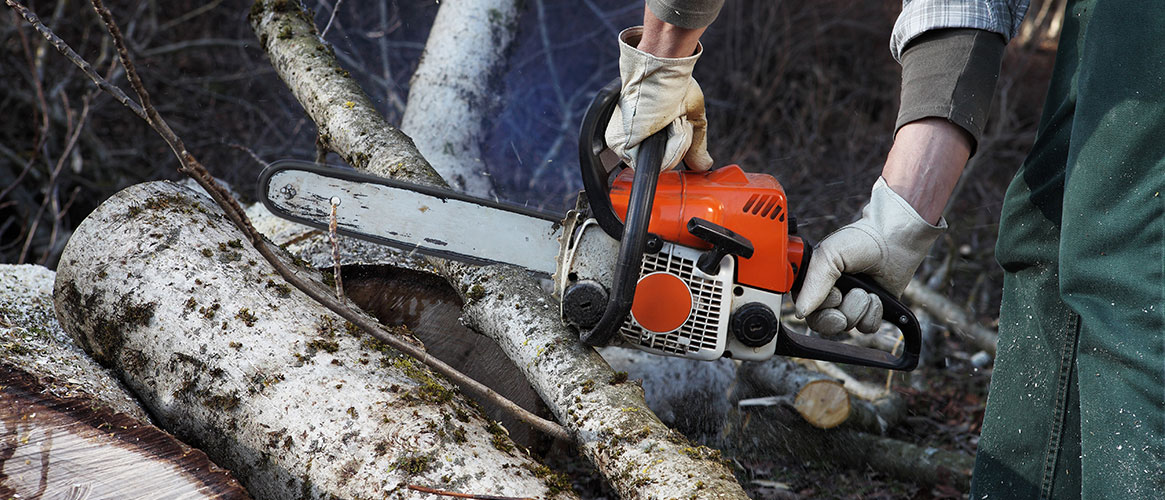Any tool powerful enough to slice through wood can do the same to human flesh, so chainsaw safety is a must. Before you operate a chainsaw, make sure you read and understand the operator’s manual. Also, make sure you have the right chainsaw for the job. The instruction manual should describe the saw’s capabilities. If you rent a saw, be sure to get a demonstration of how it works, including its safety features. Then make sure your saw is sharp, properly tensioned, and in good condition.
What employees need to know about chainsaw safety
When using a chain saw, wear protective clothing. This includes a hard hat, safety goggles, gloves (for a good grip), hearing protection, steel-toed shoes with nonslip soles, and trim-fitting clothes that won’t get caught in the chain.
Start your chainsaw according to the manual’s direction. Clear the work area so the chain won’t touch anything but the wood you want to cut. Then, place the saw on a level surface—never rest this tool on your leg or drop-start it. Stand to the side of the saw so you won’t follow the cut through into your leg. Also, stand on the uphill side of your work so it won’t roll into you. Hold the saw parallel to the ground with your left arm straight for better control. This helps reduce the chance of the saw pushing into you if it kicks back.
Keep both hands on the saw while it’s running. Work slowly, don’t rush. Let the chainsaw do the work; never force it. Avoid cutting above mid-chest height. Never attempt to cut a tree with a diameter greater than the length of the chainsaw blade. And, watch for branches that may spring back as you cut.
Always be aware of what is in the saw’s downward path after the cut. It’s a good idea to take frequent breaks from cutting so you don’t operate the saw when you’re tired.
Beware of kickback
Although some chainsaw injuries are caused by operator error, kickback is the greatest cause of chainsaw injuries. A kickback usually happens when the chain and bar get caught in a cut. This usually happens when the operator doesn’t notice that tip of the bar is hitting another branch or obstacle. The chain stops for split second, transferring momentum back towards the operator. The operator then might either lose control of the saw or lose balance, bringing the saw into contact with the body.
Some chainsaws have tip guards to help prevent kickbacks. Keeping your left arm straight and locked can help prevent an injury from a kickback by making the saw travel up during a kickback and keeping it away from you. Chain brakes are designed to instantly stop the saw when the operator releases the handle. While this doesn’t prevent a kickback, it can reduce or prevent an injury if the operator loses their grip on the saw when a kickback happens.
Other chainsaw safety precautions
When moving a chainsaw, carry it below the waist, with the engine off and guide bar pointed to the rear. This way, if you trip the saw drops behind you.
If your saw is electric, make sure you use an extension cord that’s approved for outdoor use and don’t use the saw in a damp environment. Fuel gasoline-powered chainsaws outdoors and be careful not to overfill or spill the fuel. Never refuel a hot saw. Let it cool down first, and have a fire extinguisher nearby.
It’s dangerous to work alone with a chainsaw. Have a companion within calling distance, but keep bystanders and helpers at a safe distance from operation so that they will not be injured by the saw, flying chips, sawdust or by what you’re working on.
